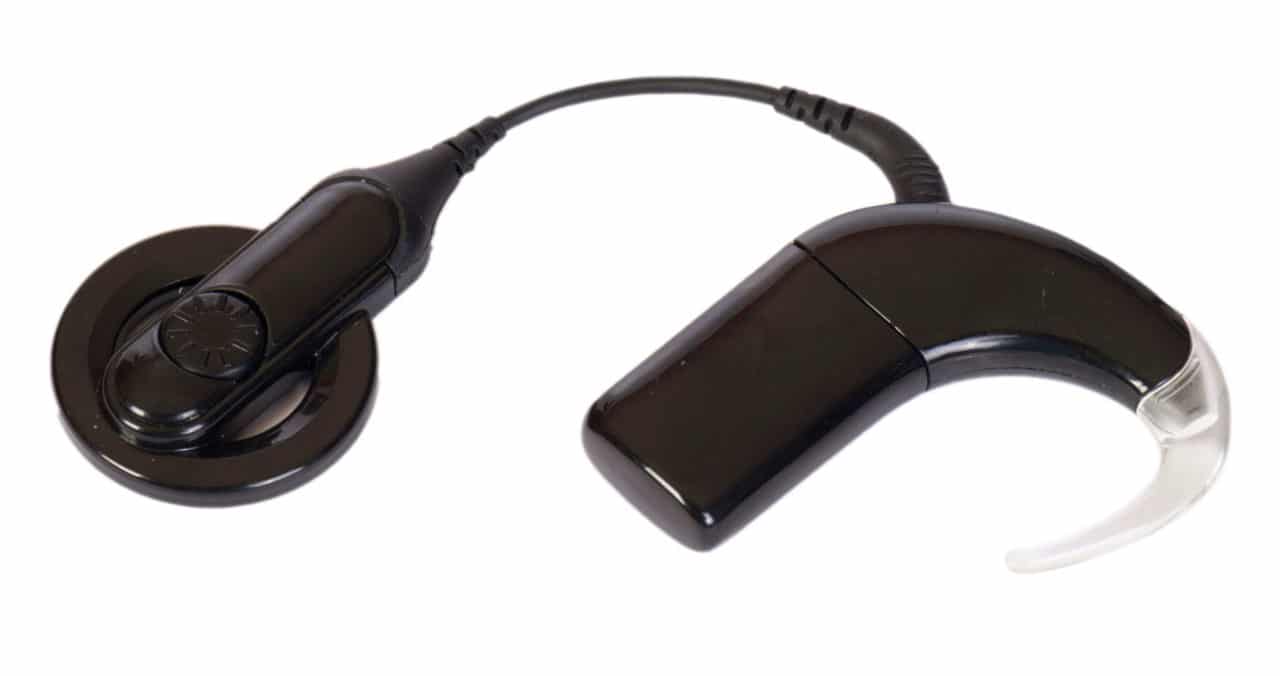Hearing aids are a boon to millions of Americans with hearing loss. But as well as they perform, they do have their limitations. They won’t work for all types of hearing loss, and some people find them too uncomfortable to wear or complain of the “occlusion effect” they produce in the ear.
They must be cleaned frequently, their batteries need replacing on a regular basis, and constant exposure to heat, humidity and earwax buildup in the ear canal makes them prone to damage. For some individuals, implantable hearing devices might be the key to improved communication.
Implantable hearing devices are surgically implanted instruments designed to improve the transmission of sound vibrations by directly stimulating the bones of the middle ear. There are several different types of implantable hearing devices; these include cochlear implants, bone anchored hearing aids and auditory brainstem implants.
Types of Implantable Hearing Devices

Implantable hearing devices work by stimulating the bones of the middle ear (ossicles) rather than amplifying sounds in the ear canal. This strengthens sound vibrations in the inner ear, and enables those with sensorineural hearing loss to be able to communicate.
Implantable hearing devices are less prone to feedback issues that can bedevil those who wear hearing aids, and some devices can be kept in place while a patient bathes and exercises.
Cochlear Implants
Cochlear implants are devices that are implanted surgically behind the ear. They contain an external portion consisting of a microphone, sound processor and transmitter, and an internal portion that includes a receiver and a group of electrodes.
The microphone picks up sounds in the environment, which are then converted by the sound processor into electronic signals that are sent to the transmitter. The transmitter forwards these signals to the receiver, where they are then passed on to the electrodes. The electrodes stimulate the auditory nerve, which carries the information directly to the brain, where it is interpreted as sound.
Cochlear implants allow those who are profoundly deaf to understand speech and other sounds.
What you should expect:
- You will hear many sounds that you have never heard or have not heard in a long time. Individuals who have had short-term hearing loss can anticipate an easier transition to hearing with a cochlear implant than those who have had a longer period of auditory deprivation.
- Many patients report that speech is “cartoon-ish”, robotic, or unnatural at first. They may also hear “beeping, clicking, tapping, humming, static, or screeching” with speech at the time of activation. The brain needs time to make this new and unfamiliar sound meaningful. As the brain learns to understand new sounds, voices and environmental noise are reported to become more natural, clearer, and familiar with time and practice.
- New recipients often find higher pitched sounds especially noticeable since hearing aids most likely did not provide as much access to these sounds. Again, with time and practice, these sounds will become more natural over time.
- It will take time for your brain to adjust to and make use of these new sounds. The cochlear implant should be worn during all waking hours except while bathing.
- Cochlear implant programming requires many visits at first as your audiologist works to gradually build your tolerance to sound and fine tune your programming. Implant activation will occur after your surgeon has medically cleared you. This process can take up to six weeks post implantation and dependent on healing of the surgical site.
- Cochlear implant surgery does not guarantee that you will develop or be able to hear/understand speech. It can take anywhere from 1 ½ months to almost a year before a person starts to develop any speech understanding.
- This can be exhausting! As your brain re-learns how to hear and sort speech from noise, you may feel mentally fatigued. It’s ok to take a break but try to pick back up again. Don’t give up!
- Be patient and ask your family and friends for their support.
What you should NOT expect:
- That you will immediately recognize the sounds that you are hearing
- That you will understand speech right away; you will still depend heavily on lip reading and/or using a hearing aid on the other ear.
- That you will be able to hear better in noise or on the phone right away.
Bone Anchored Hearing Devices
Bone anchored hearing devices consist of a titanium implant, an external abutment and a sound processor. Like cochlear implants, this system bypasses damaged hair cells in the auditory canal and middle ear, transmitting sound vibrations through the external abutment to the titanium implant, which naturally integrates (“ossifies”) with the skull bone over time.
The bones of the skull act as conductors, transmitting these sound vibrations to the inner ear, where the nerve fibers responsible for hearing are stimulated. A bone anchored hearing device is especially useful for patients with conductive hearing loss and single-sided deafness.
Call Northwest Ear Institute at (503) 444-7676 for more information or to schedule an appointment.
